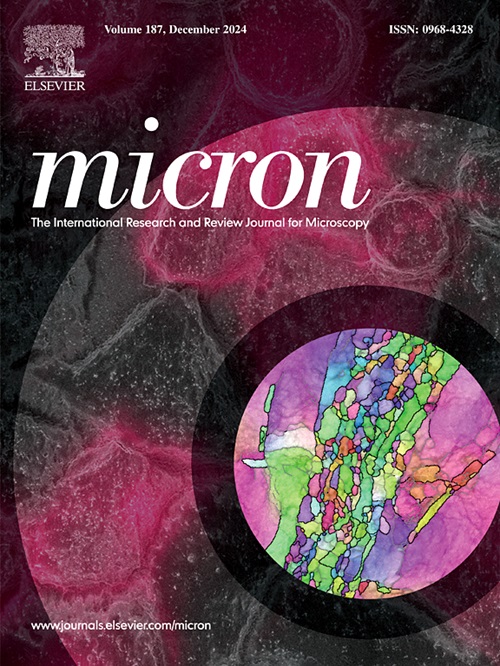乌贼 Todarodes pacificus(头足纲:乌贼科)的精子发生和精子超微结构
IF 2.5
3区 工程技术
Q1 MICROSCOPY
引用次数: 0
摘要
本研究试图描述太平洋鳕精子形成和精巢内成熟精子的特征。该物种的精子发生过程可分为四种类型:精原细胞、精母细胞、精子细胞和精子。在精原细胞中,细胞核占据了细胞的大部分,在初级精母细胞中可以观察到突触复合体。次级精母细胞的核质有明显的同源染色质和异源染色质之分。在精子形成过程中,精子可进一步分为早期、中期和晚期。早期精母细胞的核质呈颗粒状,核顶端有原顶体小泡。中期精子的核质呈纤维状,中段有发达的线粒体。晚期精子的细胞核拉长呈长方形,核质均匀,电子密度增加。核下方有线粒体突起。在精原细胞内的成熟精子中,细胞核的长度约为 4.5 μM,核质呈不规则的星状,电子密度较高。顶体呈钝锥形,长约 0.7 μM,鞭毛轴丝呈典型的 9+2 微管结构。一个线粒体突起的形状像一面长三角形旗帜,其上部含有大量线粒体,下部含有电子密度较高的糖原颗粒。本文章由计算机程序翻译,如有差异,请以英文原文为准。
Spermatogenesis and sperm ultrastructure of the squid, Todarodes pacificus (Cephalopoda: Ommastrephidae)
This study sought to characterize spermatogenesis and mature sperm within the spermatophore of Todarodes pacificus. The process of spermatogenesis in this species can be divided into four types: spermatogonium, spermatocyte, spermatid, and sperm. In spermatogonia, the nucleus occupies most of the cell, and a synaptonemal complex is observed in primary spermatocytes. The karyoplasm of secondary spermatocytes exhibits a clear distinction between euchromatin and heterochromatin. Spermatids can be further divided into early, mid, and late during spermiogenesis. In early spermatids, the karyoplasm appeared granular, and proacrosomal vesicles were found in the apical of nucleus. Mid spermatids featured a fibrillar karyoplasm, with well-developed mitochondria in the midpiece. The nucleus of late spermatids was elongated and rectangular, with a homogenized karyoplasm of increased electron density. A mitochondrial spur was present below the nucleus. In mature sperm within the spermatophore, the nucleus measures approximately 4.5 μM in length, and the karyoplasm has an irregular asterisk- shape with high electron density. The acrosome is blunt-cone shaped and approximately 0.7 μM long, whereas the axoneme of flagellum exhibits a typical 9+2 microtubular structure. One mitochondrial spur was shaped like a long triangular flag, containing numerous mitochondria in its upper region and electron-dense glycogen granules in its lower region.
求助全文
通过发布文献求助,成功后即可免费获取论文全文。
去求助
来源期刊

Micron
工程技术-显微镜技术
CiteScore
4.30
自引率
4.20%
发文量
100
审稿时长
31 days
期刊介绍:
Micron is an interdisciplinary forum for all work that involves new applications of microscopy or where advanced microscopy plays a central role. The journal will publish on the design, methods, application, practice or theory of microscopy and microanalysis, including reports on optical, electron-beam, X-ray microtomography, and scanning-probe systems. It also aims at the regular publication of review papers, short communications, as well as thematic issues on contemporary developments in microscopy and microanalysis. The journal embraces original research in which microscopy has contributed significantly to knowledge in biology, life science, nanoscience and nanotechnology, materials science and engineering.
 求助内容:
求助内容: 应助结果提醒方式:
应助结果提醒方式:


